
Blue Lake National Park was a former protected area in Queensland, Australia, located on North Stradbroke Island about 44 kilometres (27 mi) east of Brisbane. Blue Lake National Park is now a part of the Naree Budjong Djara National Park. Access was provided by road 9 kilometres (5.6 mi) west of Dunwich.

Banksia subg. Banksia is a valid botanic name for a subgenus of Banksia. As an autonym, it necessarily contains the type species of Banksia, B. serrata. Within this constraint, however, there have been various circumscriptions.

Banksia aemula, commonly known as the wallum banksia, is a shrub of the family Proteaceae. Found from Bundaberg south to Sydney on the Australian east coast, it is encountered as a shrub or a tree to 8 m (26 ft) in coastal heath on deep sandy soil, known as Wallum. It has wrinkled orange bark and shiny green serrated leaves, with green-yellow flower spikes, known as inflorescences, appearing in autumn. The flower spikes turn grey as they age and large grey follicles appear. Banksia aemula resprouts from its woody base, known as a lignotuber, after bushfires.

Banksia ser. Banksia is a valid botanic name for a series of Banksia. As an autonym, it necessarily contains the type species of Banksia, B. serrata. Within this constraint, however, there have been various circumscriptions.

A species that is extinct in the wild (EW) is one that has been categorized by the International Union for Conservation of Nature as only consisting of living members kept in captivity or as a naturalized population outside its historic range. Classification requires exhaustive surveys conducted within the species' known habitat with consideration given to seasonality, time of day, and life cycle. Once a species is classified as EW, the only way for it to be downgraded is through reintroduction.

The Somali hedgehog is a species of mammal in the family Erinaceidae. It is endemic to Somalia and Somaliland. The Somali hedgehog is nocturnal.
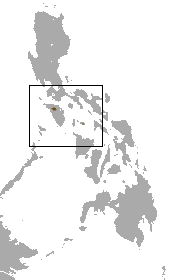
The Mindoro shrew is a species of mammal in the family Soricidae. It is endemic to the Philippines.
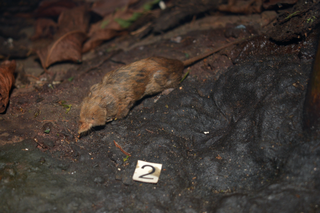
The Oriental shrew is a species of mammal in the family Soricidae. It is endemic to Indonesia.

The pale gray shrew is a species of mammal in the family Soricidae. It is endemic to Pakistan and is distributed in the Shigar valley and the western edge of Deosai.
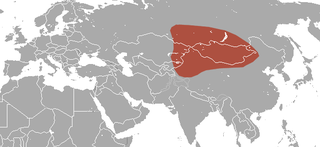
The Siberian shrew is a species of mammal in the family Soricidae. It is found in Russia, and possibly China and Mongolia.

The Caucasian shrew is a species of mammal in the family Soricidae. It is found in Armenia, Russia and Turkey.
Pillomena is a genus of small air-breathing land snails, terrestrial pulmonate gastropod mollusks in the family Charopidae.
Hintzeia is a genus of trilobites in the order Phacopida, that existed during the lower Ordovician in what is now the United States. It was described by Harrington in 1957, and the type species is Hintzeia aemula, which was originally described under the genus Protopliomerops by Hintze in 1953. Harrington also moved two other Protopliomerops species, P. celsaora and P. firmimarginis, under Hintzeia. The generic name is derived from that of the type species' author. The type locality was the Fillmore Formation in Utah.

Scaevola aemula, commonly known as the fairy fan-flower or common fan-flower, is a species of flowering plant in the family Goodeniaceae. It has mostly egg-shaped leaves and blue, mauve or white fan-shaped flowers. It grows in New South Wales, South Australia and Victoria.

Autographa aemula is a moth of the family Noctuidae. It is found in mountainous areas, more specifically in the Alps, Southern France, Northeast Turkey and the Caucasus.
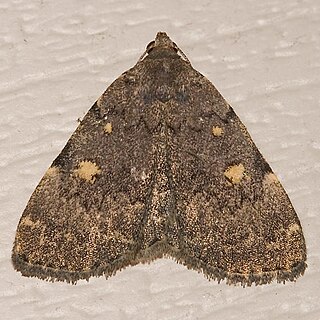
Idia aemula, the common idia, powdered snout or waved tabby, is a litter moth of the family Erebidae. The species was first described by Jacob Hübner in 1813. It is found from Canada south to Florida and Texas. It has been reported in the Palearctic.
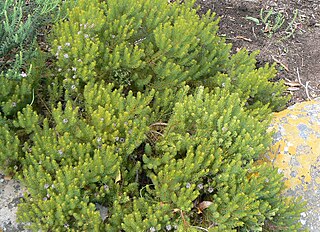
Serruria aemula is a critically endangered species of flowering plant in the family Proteaceae, endemic to South Africa. It is known by the common name of strawberry spiderhead.
Aemula is an extinct genus of brachiopods that lived during the Cretaceous period. The pedunculate brachiopod species Aemula inusitata had lived on the bodies of larger animals which served for enough feeding surface, since no large attachment sites were available on the Maastrichtian chalk of the sea floor. It was a very small animal, having a maximum length of 7 mm, and is believed to have been short lived as interpreted from its growth lines.
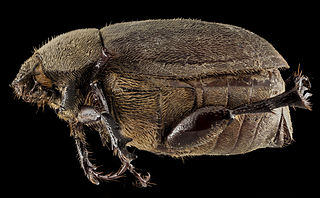
Phyllophaga aemula is a species of scarab beetle in the family Scarabaeidae. It is found in North America.
Sonora aemula, the filetail ground snake, is a species of snake of the family Colubridae.















